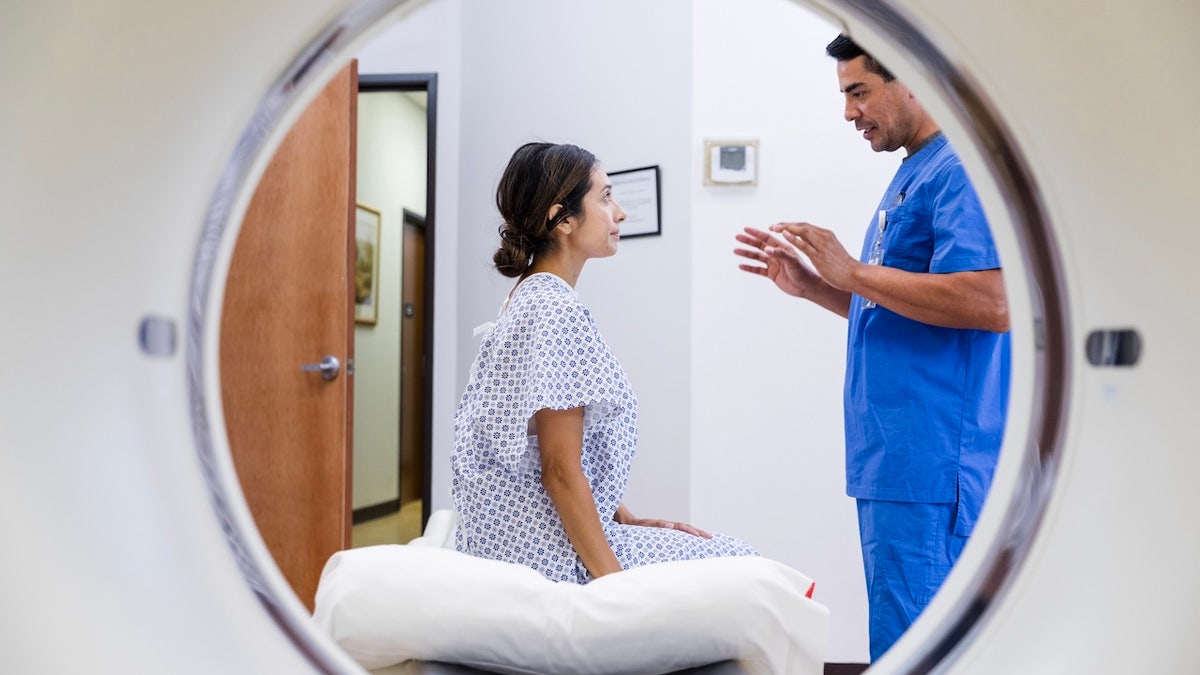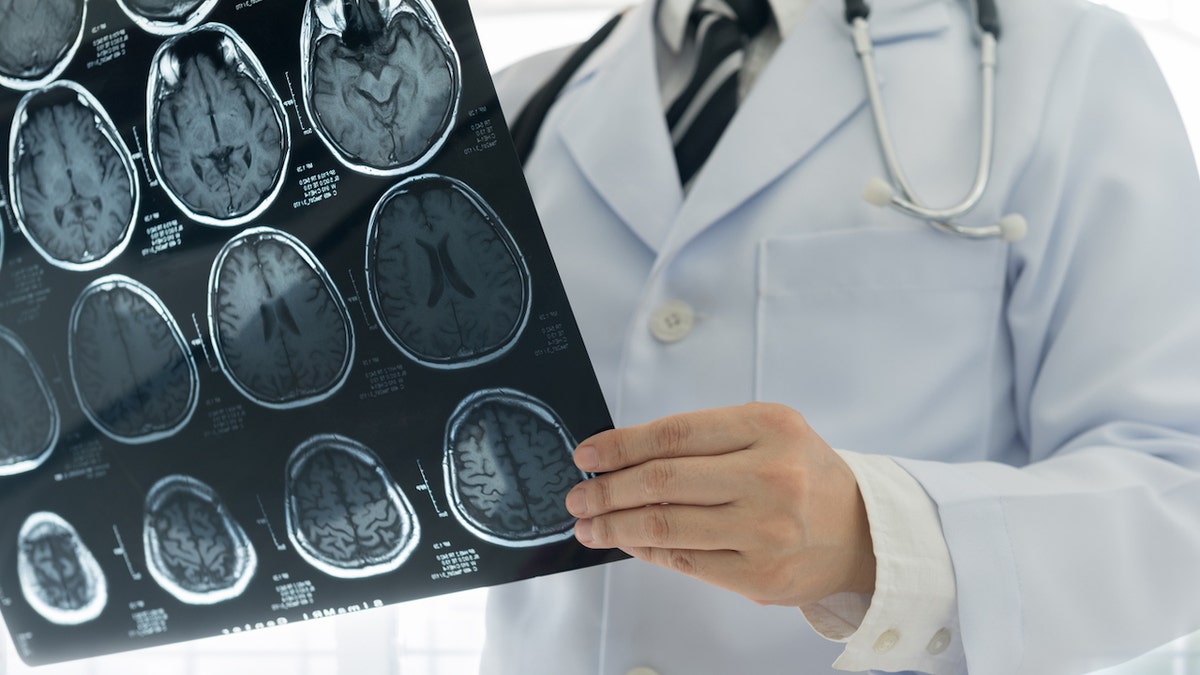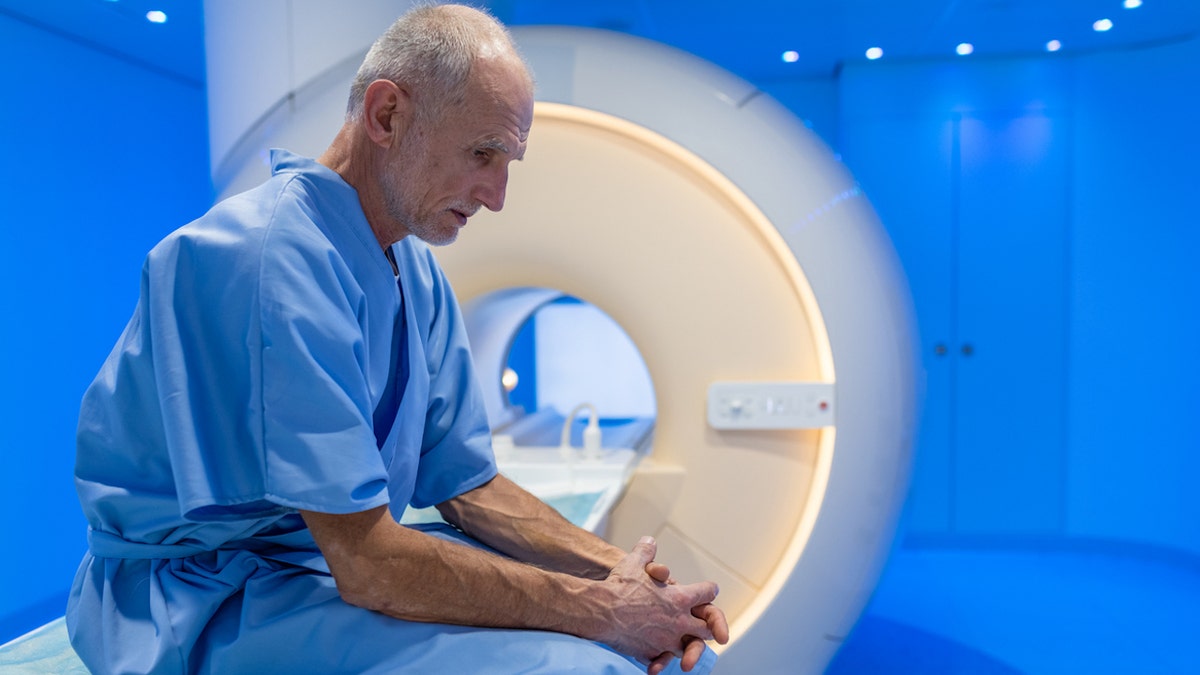Computerized, cat scans are widely used to obtain internal body images and diagnose dangerous medical conditions, but could represent a hidden risk.
A new study by the University of California – San Francisco found that CT tomography (computerized tomography) could be responsible for 5% of all cancer diagnoses each year, according to a press release.
“While there is some uncertainty, it does not significantly affect the central conclusion: a small but significant percentage of cancers is linked to computerized tomographs, and this number can be reduced,” said Fox News Digital, this number of Rebecca Smith Bindman, MD, radio and UCSF professor.
5 types of cancer where evaluation exams save the greatest amount of lives
Researchers’ estimates show that the ionizing exposure of the radiation of computerized tomographs is comparable to other significant risk factors, such as alcohol consumption and excess body weight.

Computerized, cat scans are widely used to obtain internal body images and diagnose dangerous medical conditions, but could represent a hidden risk. (Istock)
To predict how many future cancers could result from current computerized tomographs, researchers updated a previous analysis of 2023 data on exploration volumes, types of exploration and radiation dose, according to Smith-Bindman.
“We use a well validated model to estimate the risk of cancer and perform sensitivity analysis to confirm the robustness of our findings,” he said.
“This is a modeling study, which means that our conclusions depend on the accuracy of the data used.”
The type of common cancer could be detected with a new blood analysis
According to the review, researchers estimate that approximately 103,000 future cancers will be caused by computerized tomographs carried out in 2023 in the US. UU., With the largest number of cases that affect adults between 50 and 69 years.
The risk of individual cancer is higher for babies and children, with babies under 1 year 10 times more likely to develop the disease compared to others in the study.
However, adults represent most of the scanning, which drives the general cancer load, said Smith-Bindman.
“CT doses are sometimes higher than necessary.”
The most common types of cancer resulting from TC radiation, according to the study, include lung cancer, colon cancer, leukemia and breast cancer.
The study, which was published on April 14 in Jama Internal Medicine, received funds from the National Health Institutes.

“If the TC is clearly indicated, the benefits far exceed the risks,” said the researcher. (Istock)
“In many cases, CT is the most appropriate test to achieve rapid and precise diagnoses,” said Smith-Bindman to Fox News Digital.
“However, the use of CT continues to increase, including a worrying increase in the images made without a justified medical reason, often called ‘low value scan’.”
Cancer productions: There are 5 types and critical information to know about each
According to findings, researchers recommend avoiding unnecessary computerized tomographies to avoid possible damage.
Another risk reduction approach is to reduce the exploration radiation dose.
“CT doses are sometimes higher than necessary, so patients are encouraged to ask their medical care suppliers or technologists to use the lowest possible dose for their scanning,” said Smith-Bindman.

“A small but significant percentage of cancers is linked to computerized tomographs, and this number can be reduced.” (Istock)
Ultimately, said the researcher, patients should have reported conversations with their medical care providers about the need for computerized tomography and if alternative image options, such as ultrasound or magnetic resonance, could be more appropriate.
“If the TC is clearly indicated, the benefits far exceed the risks,” he said. “But if not, it is better to avoid scanning completely.”
“Less can be more when it comes to good patient care.”
Dr. Nicole Saphier, a radióloga certified by the Board and medical collaborator of Fox News, did not participate in the study, but commented on the risks and benefits of computerized tomographies.
“For a long time I have advocated the judicious use of medical images, often citing that it can less be more when it comes to good patient care,” Digital Fox told Fox News.
“The recent study that links the ionizing radiation of the computed tomographs with a higher risk of cancer underlines what many in the medical community have understood for years: although the images are a powerful diagnostic tool, it is not exempt from risks.”
Click here to get the Fox News application
Saphier said the study can even underestimate the total number of cancers attributable to medical images.
“Many cases of cancers induced by medical intervention can be not recognized due to long periods of latency, the complex interaction of the contributing factors and the fact that they omitted the radiation of image guided by images, X -rays and other forms of medical radiation of this study,” he noted.
Click here to register in our health newsletter
“As the use of images and medical interventions continue to increase, especially in younger populations, accumulated exposure to radiation throughout life becomes an increasingly important consideration.”
That said, Saphier continued, computerized tomographies and other modalities of medical images, which are “fast and cheap”, except lives every day.

According to the review, researchers estimate that approximately 103,000 future cancers will be caused by computerized tomographs carried out in 2023 in the US. UU., With the largest number of cases that affect adults between 50 and 69 years. (Istock)
“The key is balance. Doctors must remain attentive to weighing the benefits against risks, and must always explore alternative modalities when appropriate, such as ultrasound or magnetic resonance, which do not use ionizing radiation,” he said.
Informed decision making is essential for doctors and patients, according to the doctor.
For more health articles, visit Foxnews.com/health
“We must continue to refine our protocols, limit the unnecessary image and make sure we are using the lowest possible doses without compromising the diagnosis quality,” Saphier concluded.
“This is not a call to avoid computerized tomographies, it is a call to use them wisely.”


